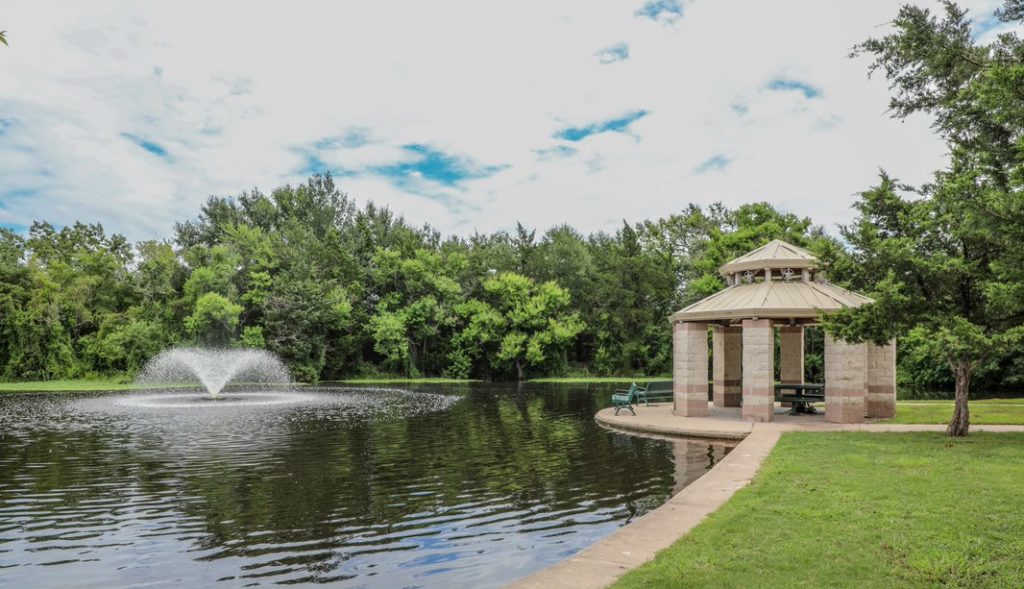Parkland dedication beneficial for revenue, taxes, recreational investment
New Texas A&M AgriLife publication resource for Texas, U.S. cities
A new publication can serve as a key tool for communities addressing issues related to acquiring and developing space for parks and green infrastructure as populations and land costs continue to increase.

To help increase awareness of the benefits of parkland dedication, a professor in the Department of Recreation, Park and Tourism Sciences at Texas A&M University has just written “Parkland Dedication: Optimizing an Underutilized Resource.”
The 108-page Texas A&M AgriLife Extension Service publication was written by John Crompton, Ph.D., University Distinguished Professor in the College of Agriculture and Life Sciences. Crompton is also past president of the American Academy of Park and Recreation Administration and the Texas Recreation and Park Society.
The publication is available at no charge and can be found on the AgriLife Learn site at https://agrilifelearn.tamu.edu/. Go to “Browse by Category” and select the “Community Development and Government” category.
What prompted the publication?
Parkland dedication is a local government requirement that mandates the dedication of land for a park and the payment of a fee to be used to acquire land and/or develop park facilities.
“There is a lack of awareness among elected officials and the general public of the potential of parkland dedication,” Crompton said. “Parkland dedication is an important resource for reducing taxes, providing political centrality, and contributing to how fast-growing cities invest in parks and green spaces. However, it remains a substantially underappreciated and underutilized opportunity in cities in Texas and beyond.”
He noted many U.S. cities do not even have a parkland dedication ordinance.
“Additionally, among municipalities that have an ordinance, the specified exaction for parks and green infrastructure is only a fraction of what could legally be required,” he said.
Exactions are payments a developer makes to local governments for the right to proceed with a project and may include specified land, improvements, payments or other public benefits that will offset project impacts.
Crompton noted the use of parkland dedication is also particularly appropriate for a fiscally conservative state such as Texas.
“We do not have a state income tax and also prefer not to have any tax increases,” he said. “In parkland dedication, demand is created, and we are able to keep taxes lower as those who are creating the demand are also paying for it. It is an underused tool and useful part of an effective fiscally conservative strategy.”
Developing the new publication
In 2010, Crompton published “Parkland Dedication Ordinances in Texas: A Missed Opportunity?” in which he analyzed parkland dedication ordinances from 48 Texas cities and identified best practices for establishing and revising these ordinances.
“But over the past decade, the legal parameters governing these ordinances have continued to evolve,” Crompton said. “The methodology expected by the courts for calculating the amount of dedication has become more sophisticated, and more Texas cities have adopted parkland dedication ordinances. In particular, the courts have granted greater authority pertaining to these ordinances.”
The new publication, which expands substantially on the 2010 publication, is divided into three sections: Principles and Evolution of Parkland Dedication, Calculating the Amount of a Parkland Dedication, and Political Considerations.
Publication sources
The insights, examples and conclusions in the new publication are derived from:
— A review of the literature on parkland dedication and other exactions.
— The author’s interactions with multiple stakeholders in the course of developing ordinances for many cities within Texas and beyond. Crompton has also served as an expert witness in court litigation relating to parkland dedication disputes and has served for seven years as an elected city councilman in College Station.
— Analysis of 73 parkland dedication ordinances collected from cities throughout Texas.
The publication describes how information was collected and provides a list of the cities from which information was provided. There is also a supplementary analysis of another 29 park exaction ordinances collected from the 90 largest U.S. cities outside of Texas along with a listing of these cities.


